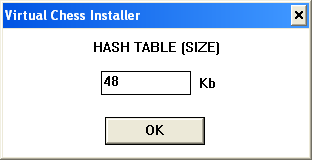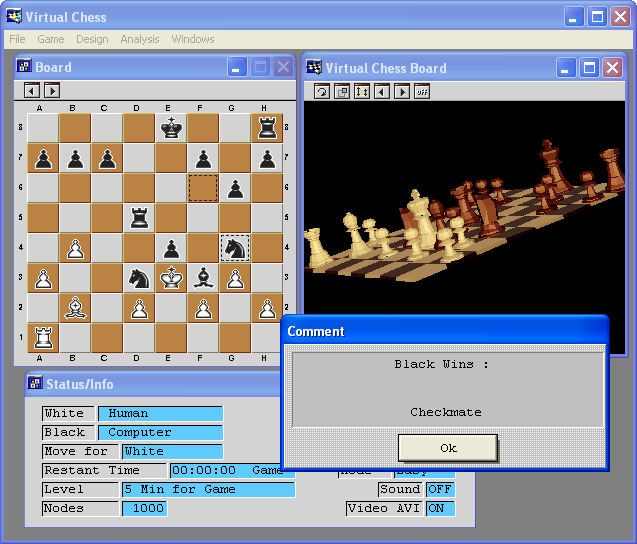The last chess game, Combat Chess, was totally extreme and placed heavy emphasis on the blood that is shed, metaphorically, during an intense chess match. Today’s game, Virtual Chess, comes from a slightly earlier epoch (1995, if the copyright date is to be believed) and is rather pleased to show off its rotating chess board.
First thing’s first: Installation. The first question that this game’s installer throws my way (after inserting the CD-ROM) is something that I feel unqualified to answer, even though I hold a degree in computer science and distinctly remember learning about something called “hash” in school:

After that, there’s a minor bout of DLL Hell when I need to copy some DLL from windows\system -> windows\system32 (or maybe it was vice versa). Anyway, installation was mostly painless, with the right level of knowledge and patience.
What have I gathered from the 2 chess games over the last few days? That I’m still so bad at chess that I should be barred from participating in the game, for my own good:

The above shot demonstrates the look and feel of the game. By default, the window is large enough to accommodate the basic 2D chess board and the 3D virtual chess board. There are icon buttons above each board but they could use tooltip text. The forward/back arrows allow you to rewind and replay moves. The extra buttons above the “virtual” board are used for rotating the perspective. The creators were awfully proud of this feature, obviously, and felt that it’s how they could innovate in the chess sim genre. If you rotate at certain angles, you will even see some attempt at lighting on the board squares. Still, I appreciate that they have normal-looking chess pieces and allow you to select between several common sets.
Putting aside the gimmicky virtual feature, the remainder of the game is quite feature rich. I especially appreciate that the UI does not block when the computer is contemplating its next move, unlike certain other chess sims I could name. I could list the interesting features I found in the game. However, I suspect that — much like my (not very) revolutionary discovery that pinball games have a “nudge table” feature — these chess games all have these same features at a bare minimum. In fact, the first chess game that I ever played, Chessmaster for the original NES, had dozens of features I couldn’t make sense of. I was too busy trying to beat the computer on setting “beginner 2” (the machine was a pushover on “beginner 1”).
The game disc contains a number (5, to be exact) of AVI animations. The first one is played when you start the game. It consists of several overblown logo animations for the various parties credited with production. Then it goes into a seemingly endless sequence of rotating chess boards and pieces, interspersed with the title “Virtual Chess”. This goes on for 3 minutes. I would upload the intro animation to YouTube but I don’t feel like competing for the least-watched video award on the service. However, I did upload this much shorter, and much stranger animation. It depicts the chess pieces melting onto the board and draining off into a container that is then covered up with a lid reading “Virtua Chess” (alternate title or typo?):
Harrison says:
Hi,
I enjoyed reading this… honest and very timely too. I’ve recently set up a Wiki-website dedicated to offering information about games, gaming and ‘winning’ strategies. We are looking for people with expert knowledge to help us boost the content of the site. Having read your postings I wondered if you would be able to help us. Please take a look at our site (still very much in its infancy), and if you would like to edit or add a section (even an extract from one of your blog-entries) we would be delighted. Of course, you are welcome to add links back to your blog. You can also create an “Author’s†page with further links if you like.
Regards,
Harrison
http://www.win-ipedia.org
Anonymous says:
can eney one tell me if theres a way i can play combat chess with out instaling it with out the cd rom